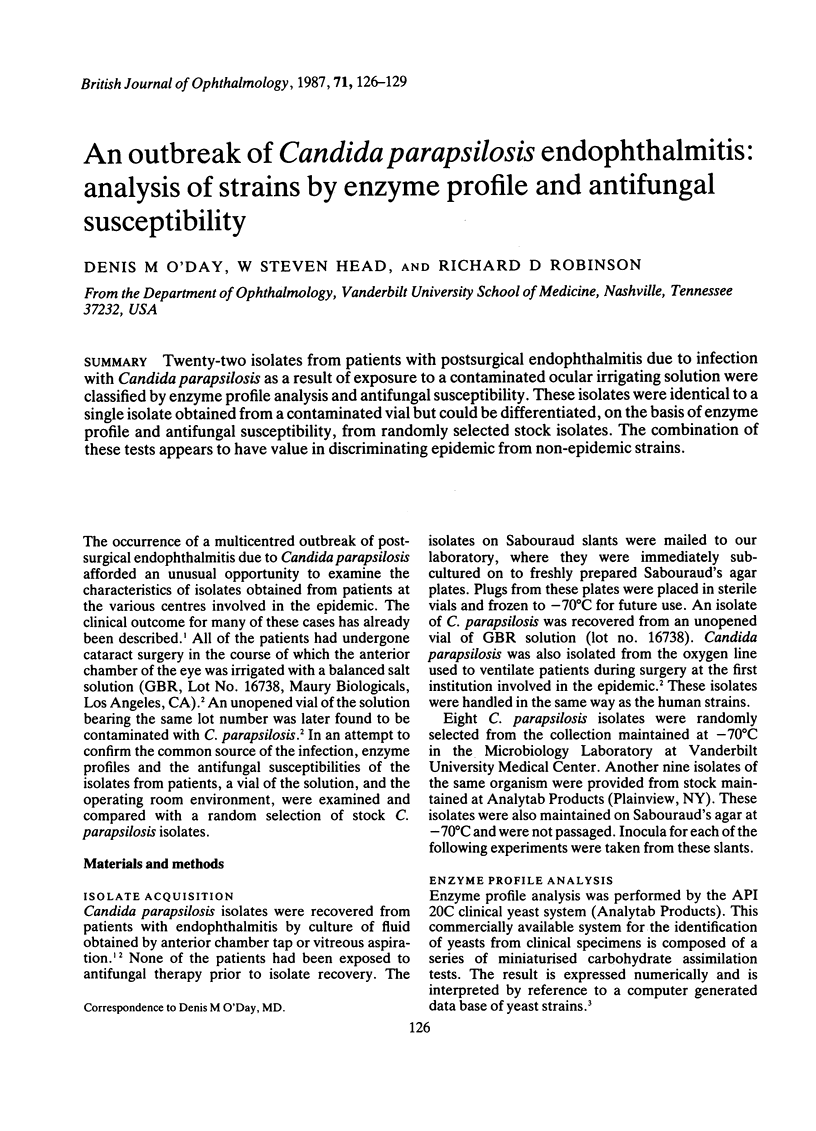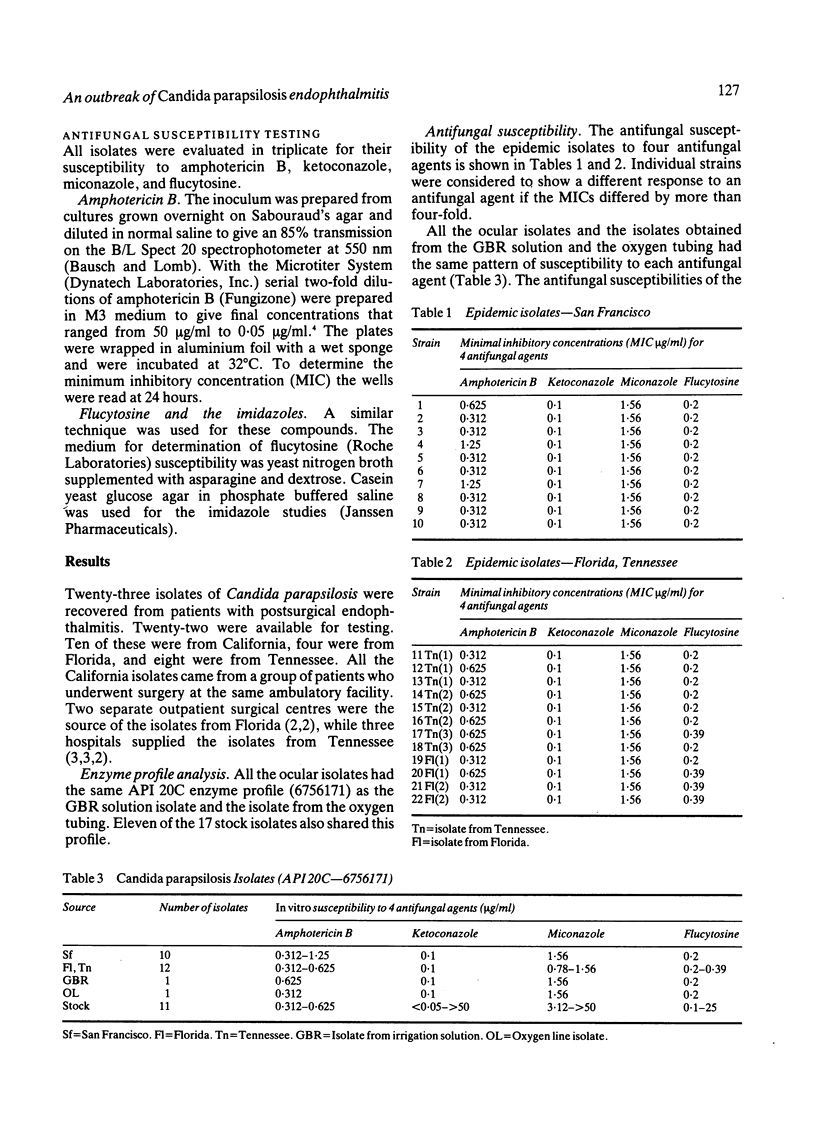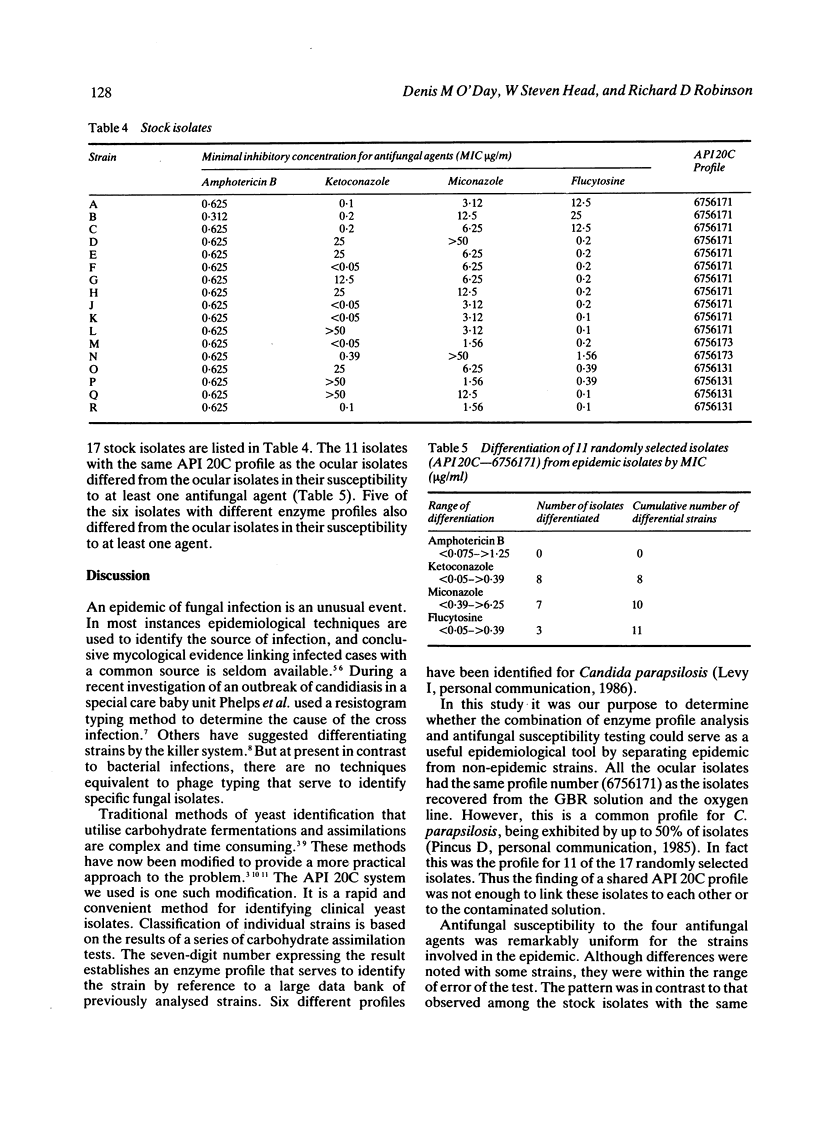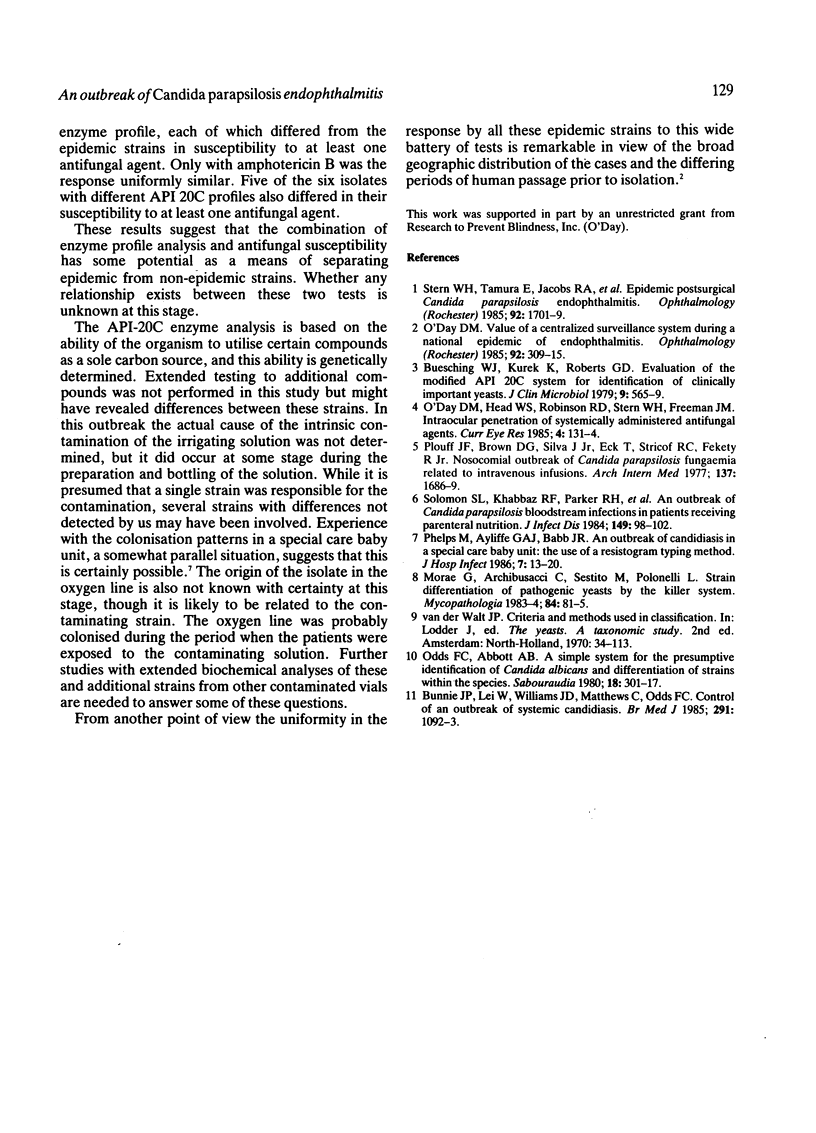Abstract
Twenty-two isolates from patients with postsurgical endophthalmitis due to infection with Candida parapsilosis as a result of exposure to a contaminated ocular irrigating solution were classified by enzyme profile analysis and antifungal susceptibility. These isolates were identical to a single isolate obtained from a contaminated vial but could be differentiated, on the basis of enzyme profile and antifungal susceptibility, from randomly selected stock isolates. The combination of these tests appears to have value in discriminating epidemic from non-epidemic strains.
Full text
PDF



Selected References
These references are in PubMed. This may not be the complete list of references from this article.
- Buesching W. J., Kurek K., Roberts G. D. Evaluation of the modified API 20C system for identification of clinically important yeasts. J Clin Microbiol. 1979 May;9(5):565–569. doi: 10.1128/jcm.9.5.565-569.1979. [DOI] [PMC free article] [PubMed] [Google Scholar]
- Burnie J. P., Lee W., Williams J. D., Matthews R. C., Odds F. C. Control of an outbreak of systemic Candida albicans. Br Med J (Clin Res Ed) 1985 Oct 19;291(6502):1092–1093. doi: 10.1136/bmj.291.6502.1092-a. [DOI] [PMC free article] [PubMed] [Google Scholar]
- O'Day D. M., Head W. S., Robinson R. D., Stern W. H., Freeman J. M. Intraocular penetration of systemically administered antifungal agents. Curr Eye Res. 1985 Feb;4(2):131–134. doi: 10.3109/02713688508999978. [DOI] [PubMed] [Google Scholar]
- O'Day D. M. Value of a centralized surveillance system during a national epidemic of endophthalmitis. Ophthalmology. 1985 Mar;92(3):309–315. doi: 10.1016/s0161-6420(85)34035-6. [DOI] [PubMed] [Google Scholar]
- Odds F. C., Abbott A. B. A simple system for the presumptive identification of Candida albicans and differentiation of strains within the species. Sabouraudia. 1980 Dec;18(4):301–317. [PubMed] [Google Scholar]
- Phelps M., Ayliffe G. A., Babb J. R. An outbreak of candidiasis in a special care baby unit: the use of a resistogram typing method. J Hosp Infect. 1986 Jan;7(1):13–20. doi: 10.1016/0195-6701(86)90021-6. [DOI] [PubMed] [Google Scholar]
- Plouffe J. F., Brown D. G., Silva J., Jr, Eck T., Stricof R. L., Fekety F. R., Jr Nosocomial outbreak of Candida parapsilosis fungemia related to intravenous infusions. Arch Intern Med. 1977 Dec;137(12):1686–1689. [PubMed] [Google Scholar]
- Solomon S. L., Khabbaz R. F., Parker R. H., Anderson R. L., Geraghty M. A., Furman R. M., Martone W. J. An outbreak of Candida parapsilosis bloodstream infections in patients receiving parenteral nutrition. J Infect Dis. 1984 Jan;149(1):98–102. doi: 10.1093/infdis/149.1.98. [DOI] [PubMed] [Google Scholar]
- Stern W. H., Tamura E., Jacobs R. A., Pons V. G., Stone R. D., O'Day D. M., Irvine A. R. Epidemic postsurgical Candida parapsilosis endophthalmitis. Clinical findings and management of 15 consecutive cases. Ophthalmology. 1985 Dec;92(12):1701–1709. doi: 10.1016/s0161-6420(85)34095-2. [DOI] [PubMed] [Google Scholar]


